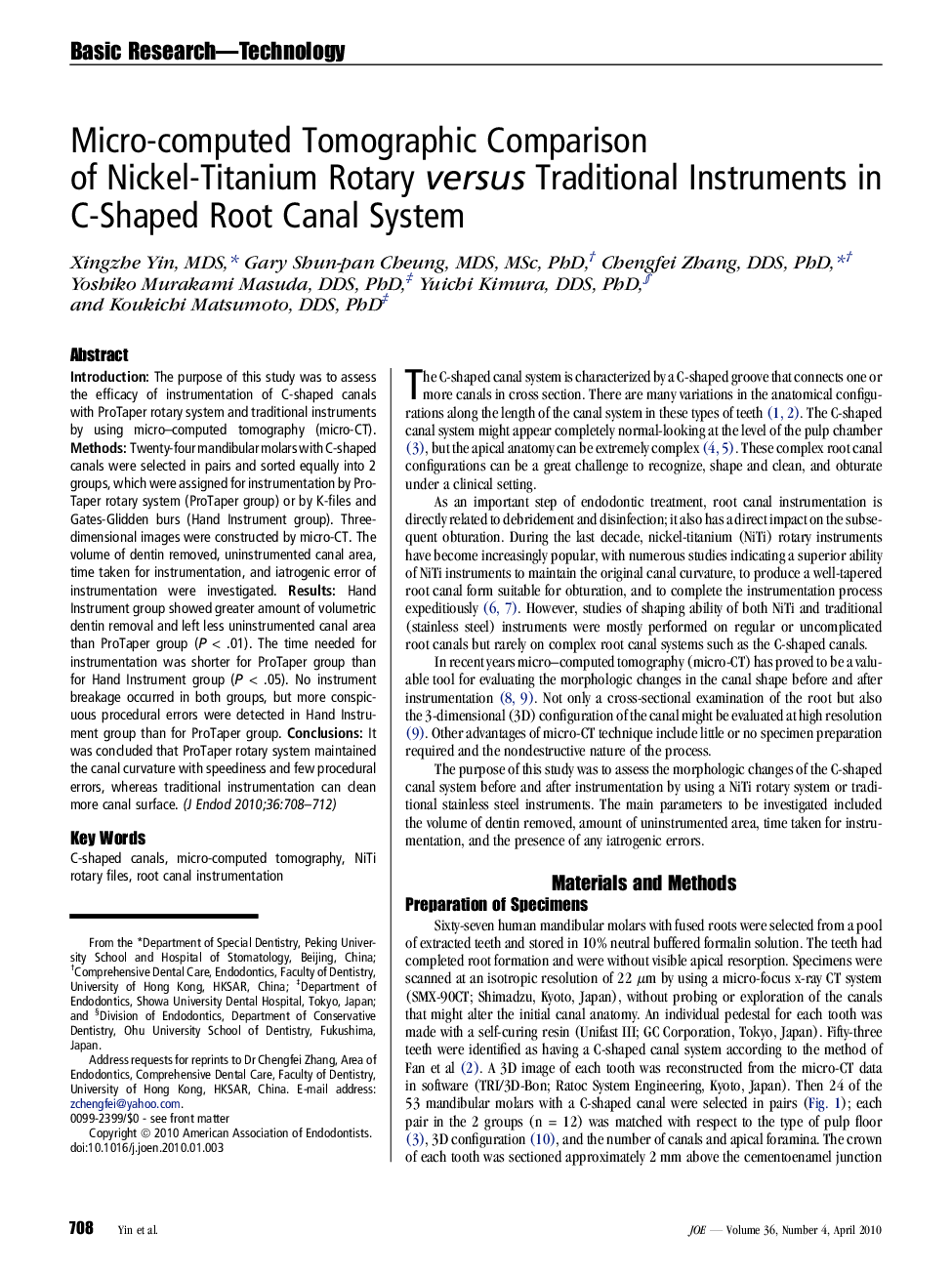| Article ID | Journal | Published Year | Pages | File Type |
|---|---|---|---|---|
| 3147976 | Journal of Endodontics | 2010 | 5 Pages |
IntroductionThe purpose of this study was to assess the efficacy of instrumentation of C-shaped canals with ProTaper rotary system and traditional instruments by using micro–computed tomography (micro-CT).MethodsTwenty-four mandibular molars with C-shaped canals were selected in pairs and sorted equally into 2 groups, which were assigned for instrumentation by ProTaper rotary system (ProTaper group) or by K-files and Gates-Glidden burs (Hand Instrument group). Three-dimensional images were constructed by micro-CT. The volume of dentin removed, uninstrumented canal area, time taken for instrumentation, and iatrogenic error of instrumentation were investigated.ResultsHand Instrument group showed greater amount of volumetric dentin removal and left less uninstrumented canal area than ProTaper group (P < .01). The time needed for instrumentation was shorter for ProTaper group than for Hand Instrument group (P < .05). No instrument breakage occurred in both groups, but more conspicuous procedural errors were detected in Hand Instrument group than for ProTaper group.ConclusionsIt was concluded that ProTaper rotary system maintained the canal curvature with speediness and few procedural errors, whereas traditional instrumentation can clean more canal surface.
